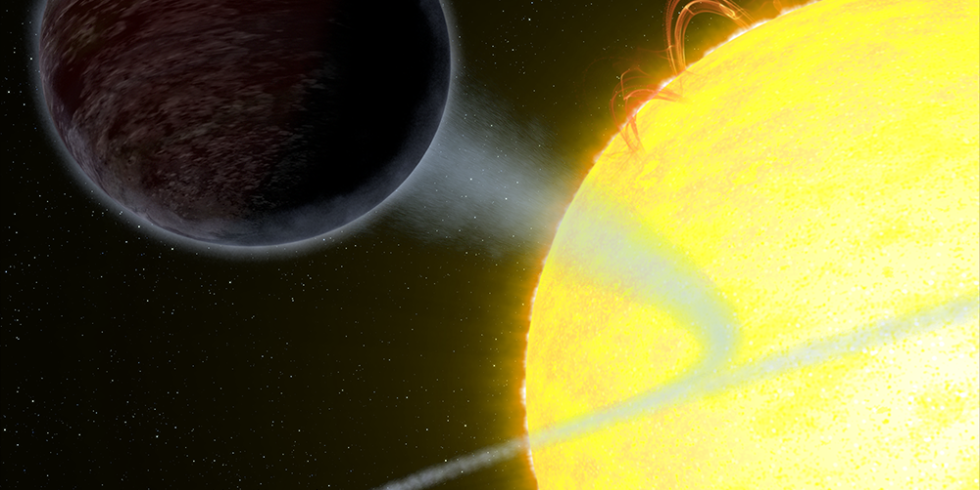Giant Exoplanet Found to Be Almost Completely Black

The Hubble Space Telescope has revealed that an extremely large exoplanet is so odd that it could be the centerpiece of its own Star Trek episode. WASP-12b, about twice the mass of Jupiter and three times the radius, is completely black. The bizarre world has the seemingly unique ability to trap at least 94 percent of the visible starlight falling into its atmosphere.
WASP-12b known as a "hot Jupiter." Like Jupiter, these exoplanets are gigantic and gaseous, and they are very close to their host stars. At a mere 2 million miles away from its star, WASP-12b is so hot that most molecules cannot form in the 4,600-degree-Fahrenheit day side of the planet, leaving the atmosphere full of pure atoms. It is one of the hottest exoplanets known (although not the hottest).
Because the heat prevents molecules from forming on WASP-12b, researchers believe there are no clouds to reflect light into space. As a result, light from the sun penetrates the planet's atmosphere. Deep inside the atmosphere, that light is absorbed by hydrogen atoms and converted to heat energy.
"We did not expect to find such a dark exoplanet," says lead researcher Taylor Bell of McGill University in a Hubble press release. "Most hot Jupiters reflect about 40 percent of starlight." The night side of WASP-12b is about 2,000 degrees cooler, which allows for water vapor and clouds to form. This discrepancy shows how much we still have to learn about hot Jupiters.
"This new Hubble research further demonstrates the vast diversity among the strange population of hot Jupiters," Bell says. "You can have planets like WASP-12b that are 4,600 degrees Fahrenheit and some that are 2,200 degrees Fahrenheit, and they're both called hot Jupiters. Past observations of hot Jupiters indicate that the temperature difference between the day and night sides of the planet increases with hotter day sides. This previous research suggests that more heat is being pumped into the day side of the planet, but the processes, such as winds, that carry the heat to the night side of the planet don't keep up the pace."
Planets outside our solar system are full of surprises. As we continue to learn, most of them are nothing like the ones in our little neighborhood.
Source: Hubble Space Telescope
You Might Also Like

